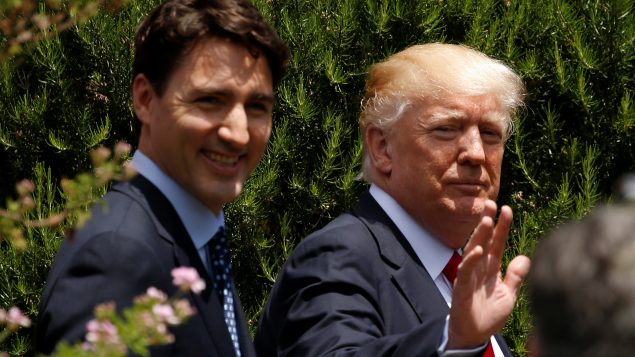With two days to go until G7 leaders gather in Charlevoix, Quebec, summit participants have yet to agree on a final communique, according to reports by the German Press Agency, dpa.
Citing a source in Berlin, the press agency reports that disagreements with U.S. President Donald Trump over trade and climate change policies could lead the Charlevoix summit to conclude without the usual joint communique for the first time in G7 history.
The planned pre-negotiated consensus communique by the group of seven leading industrial nations – Canada, Britain, France, Germany, Italy, Japan and the United States – “is hanging in the balance,” the news agency says.
Speaking on background, officials in the Prime Minister’s Office did not deny the German report but said they “won’t prejudge the outcomes of negotiations between leaders” and “are looking forward to working together on the big issues.”
An important point of summit process
John Kirton, director of the G7 Research Group at the University of Toronto, said it is not surprising the sides have not come to a consensus.
“We have known for some time, even before the metal tariffs, that there was some chance that the Americans would not agree to a pre-negotiated consensus communique, and that as a result the Canadians might have to rely for the first time in summit history on having only a chair’s statement or a summary,” Kirton told Radio Canada International.

U.S. President Donald Trump waves next to Canadian Prime Minister Justin Trudeau, following a family photo at the G7 Summit expanded session in Taormina, Sicily, Italy May 27, 2017. (Jonathan Ernst /REUTERS)
G7 summits often use a chair’s statement or summary but they have always had a pre-negotiated communique, which would normally be agreed upon months before the leaders gather around the negotiating table.
It’s a point of the summit process that matters because it basically shows the U.S. isolated against the rest, Kirton said.
Repeat of Taormina drama?
There was almost no pre-negotiated final communique at Trump’s first G7 summit in Taormina, Italy, last year, Kirton said.
“It was only at the last moment that the Americans agreed to let one go,” Kirton said. “If I had to guess, I think the outcome at Charlevoix will be the same as Taormina, that you well have a pre-negotiated consensus communique if only a short one and, perhaps, containing passages, which say that the United States does not agree to this paragraph or part.”
The Europeans and the Japanese prefer a long and detailed pre-negotiated communique, while the U.S. side prefers no communique at all or a short or summarized statement by the leaders, highlighting some of the commitments, Kirton said.
As G7 host, Canada has always preferred rather minimalist communiques rather than very lengthy ones preferred by the Europeans and the Japanese, he said.
“But if Canada is forced to fall back on just a chair’s statement, you can get commitments that certainly can be complied with,” Kirton said. “So it’s not the end of the game.”







For reasons beyond our control, and for an undetermined period of time, our comment section is now closed. However, our social networks remain open to your contributions.